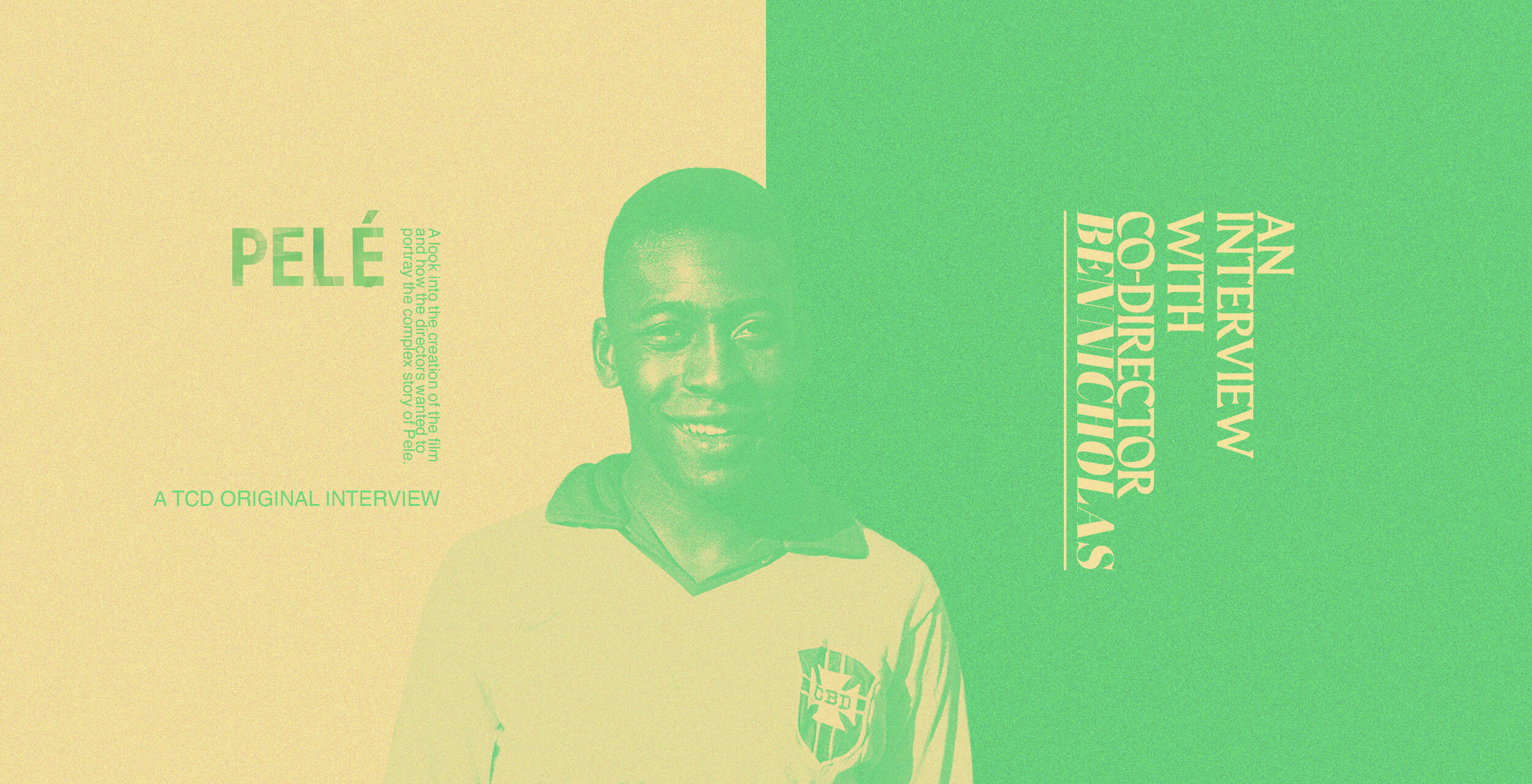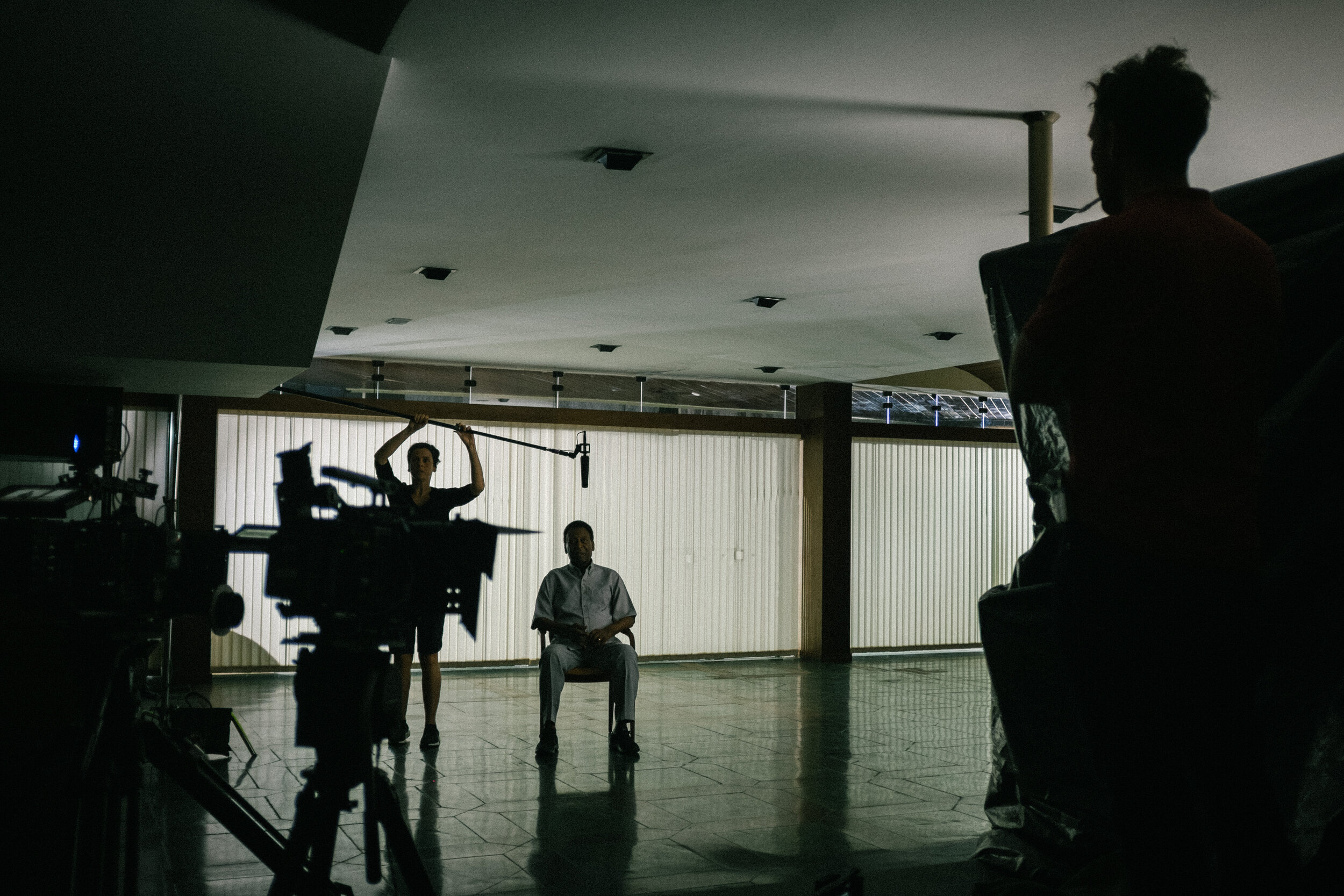Humanising Pelé: The Culture Division meets filmmaker Ben Nicholas
In Netflix’s Pelé, co-director Ben Nicholas tells the story of how The King rose to superstardom against a backdrop of repression and violence.
You know the scene. Like an epic renaissance painting, the full-time whistle in a World Cup final is a necessarily surreal moment. A breathless frenzy, featuring the full range of human emotions: elation, despair, all-around delirium, and everything in between. That of the 1970 World Cup is perhaps the most beautifully chaotic of all full-time whistles.
It’s a scene of people who know they are participating in an historical moment of legend-confirming proportions. Cameramen looking for era-defining shots, Brazilians embracing in celebration, Italians sinking to their knees in tiresome defeat, clusters of balloons, sombreros, sunglasses, flags, blues, greens, yellows, emboldened by the Mexican sun and surrounded by the enormous and majestic Estadio Azteca.
In the middle of it all, Italian defender Roberto Rosato looks up, turns and heads frantically - like so many others - in the direction of one man. For Rosato, the heartbreak of losing a World Cup final momentarily subsides, as he tussles with others, successfully, to get his hands on an arguably bigger prize: the golden-yellow shirt of the almighty Pelé.
This glorious footage is the crescendo of Netflix’s Pelé, the newest and, in our opinion, the most cinematic and moving documentary about the great man to date. It shows the development of both a national identity and of a character moulded largely by the expectations of others.
To delve deeper into the world of O Rei, we spoke with co-director Ben Nicholas about the man himself, his legacy and the challenges of crafting such a film.
photo via Tomas Brice
The film’s footage is breathtaking. Was it a case of letting the footage guide the story or vice versa?
BN: “You cut your cloth accordingly and always remember to be led by the archive - but at the same time you still have to impose a structure on the film, to try and make an entertaining story and pull everything together.
Like all the good docs of this style, it was about trying to create the feeling that you’re reliving the story with the people who were actually there when it happened. We made sure every single person in the film had a personal relationship and relevant connection to Pelé at the time that the story is taking place.
But once we had seen the full rushes of the aftermath of the World Cup Final in ‘70 with the crowd running onto the pitch to surround Pelé, we knew immediately that had to be our climax, we knew that was a Ridley Scott-style set piece to end the film with. And once we had that in place, it was a case of ensuring that the audience arrives in ‘70 emotionally invested in what’s about to happen.”
How did you go about sourcing and selecting it? I’m imagining you trawling through hours of grainy black and white footage on a reel-to-reel.
BN: “There was a crazy amount of footage, but a lot of it was a certain type of footage. We could have made a ten-hour edit of Pelé getting on and off various planes, or of regional Brazilian league football where you’re really squinting to see which teams are playing. There was none of that 80s or 90s style footage where you might find hours and hours of behind-the-scenes camcorder footage in nightclubs and dressing rooms.
What the available footage did demonstrate was that Pelé was someone who had a bit of fortune in his life, in terms of just time and again being the right man at the right time. You know, he explodes onto the scene at a time when TV is quickly becoming the next big thing. Using celebrities in advertising is becoming a thing. Magazines are getting huge so there’s a thirst for a new cover star – and here’s this handsome guy with a great smile.
As someone says in the film, he’s a product of his era, and because of that, he lived a life that no one before him had ever lived. And somehow, he instinctively seems to understand how to work that fame, and how to work the media. So all of these things come together to help perpetuate the creation of Pelé the character - the symbol.”
photo via Tomas Brice
I was blown away by the footage of the 1970 World Cup, which is clearly central to this whole story. Is it the most aesthetically beautiful World Cup ever?
BN: “Yeah the archive from 1970 is unbelievable, I think maybe the most beautiful footage of any sporting event ever - maybe the ‘84 LA Olympics would be the other big contender. But 1970 is a huge part of the Pelé mythology. Of course, it was the first World Cup to be televised in colour around the world, and to see Pelé looking so majestic, in the best kit of all time and under the Mexican sun, is one of the key images in the Pelé iconography. Here again, he’s the right man at the right time.”
The other scene that really stuck with me was that setting of Pelé and his old Santos mates. Laughing, cracking jokes, tucking into some lunch. That must’ve been special to have been a part of.
BN: “It was such a cool day. People forget that Santos team was one of the greatest club sides of all time. And unbelievably, most of the key players are all still alive, despite the amount of time that's passed since they played together. We wanted to show a slightly different side of Pelé. Like most great players, and with the passage of time, you start to become a bit two dimensional, you start to turn up to all these FIFA events in a nice suit. Ultimately, Pelé's a Brazilian guy who much prefers wearing a t-shirt and flip flops. We wanted to show him in that environment as one of the boys.
It was fun but we actually had to spend quite a long time persuading him to do it. I think he was worried the emotion of the occasion would get the better of him. But we've since been told by the small team of people around him that he now looks back at that barbeque as one of his favourite days of recent years and a day he still talks about.”
The BBQ scene, and the fact that he was on camera, reacting to your questions, really helped to humanise him. What was it like meeting him in person?
BN: “He’s a fascinating mixture of old-fashioned star power and charisma, but then also just quite a simple, sweet, humble old guy as well. He’s very good at making you feel comfortable around him - but there were also definitely moments when he would walk into the room and I would think, “Oh shit, hang on a second, that’s Pelé.”
Pelé’s also someone that since the age of 17, has had a microphone pushed in his face every time he steps out the front door, so over the years he’s created a set of stock answers to get himself through these interviews. A big part of our job was to work through those answers and then try to get something deeper.
I think he’s also reached an age where he feels more reflective, and we really wanted to get him to open up on camera in a way he hasn’t done before. So that’s why we made the film in the style we did. We thought it was really important to get him on camera and to have him speaking his native Brazilian Portuguese. To let the audience be able to sit with Pelé and feel connected to him.”
Most viewers won’t have seen more than blurry highlights and stock interviews and formed an opinion based on that. How important was it to open up that understanding of him?
BN: “Over the years I think Pelé’s become someone very familiar to a lot of us, but someone that’s also remained an enigma as well. He’s a famous figure that everyone seems to think they know, but really they only have quite a superficial knowledge of his story and not much else.
So our main idea was to really explain how this kid comes out of nowhere to become Pelé, this mythical character. What’s the context behind that? What are the things that needed to happen for Pelé to become that figure and that symbol of Brazil? But at the same time, we also wanted to humanise him as well, to try and understand Pelé on a human level. That was crucial. The worst thing we could do was just have 90 minutes of people saying, “He was great, he was great.” So that was our initial plan - to try and explain the myth but then also humanise the myth.”
The social commentary of Brazil and its development as a modern nation is fascinating. Do you think you could tell Pelé’s story without that context?
BN: “It’s really a story about Pelé and Brazil - and their relationship between 1958 and 1970. It’s about personal identity and national identity. Because Brazil before Pelé, and after Pelé, are two totally different places in terms of cultural and national identity. Before Pelé, Brazil is a country riddled with self-doubt - then he arrives on the scene at the ‘58 World Cup and over the next 12 years he goes on to play the lead role in so much of what we now pretty much see as Brazilian identity – the country of football.
The truth is that the ‘58 World Cup becomes such a profound moment for the country, that he instantly attains mythical status, he’s being called the King at 17 years of age, he’s the symbol of the new Brazil, the catalyst for the golden years. And to cope with that, he almost forgoes his own identity to become Brazil essentially. So we really liked this idea that Pelé’s life somehow syncs up with Brazil, to the point where, when Pelé’s feeling good, Brazil’s feeling good and vice versa.”
photo via Tomas Brice
Today it is welcomed - often expected - that athletes of the highest profile use their platform to speak out against societal and political issues. Pelé’s unwillingness to challenge Médici and the dictatorship, given his profile, has attracted a lot of criticism. Is it fair?
BN: “I often compare him to a Hollywood actor from the old studio system, he’s got that kind of quality about him. Even today. He’s someone who becomes The King at 17, the symbol of a new country, and to cope with that he kind of creates the character of Pelé, whose job is to be the best footballer in the world, to represent Brazil, and to smile for the camera. And he’s unbelievable at it. He gives the people exactly what they want from a star. Then, as the mid-1960s approach, I think what the people want from a star starts to change, people like Muhammad Ali emerge, and Pelé is suddenly slightly out of step with the times.
You could argue that if you’re Pelé and everything you’ve touched has turned to gold for the first half of your career, it’s quite hard to suddenly pivot and become this radical figure who’s challenging the establishment every 5 minutes. But Pelé, rightly or wrongly, decides: “I’m Pelé, I’m going to stick to the plan. I do my talking on the pitch. I bring joy to people with my football and that’s what I’m going to continue to do. That’s who I am.”
His background is also such that he’s not someone who would ever want to be divisive or controversial. As a poor black kid in Brazil, the idea that he could one day become the symbol of the country would have been a magical dream for him and his family. So once he became the King, I think he always wanted to keep projecting the kind of image that brought people together and not one that was picking fights with the government. Maybe that was a mistake, and if Pelé was a player today I’m 100% sure he would be doing more but I still think he would be more of a Michael Jordan-type figure rather than a LeBron James – that’s just his personality.”
It’s hard to think of another player whose legacy has pretty much eclipsed their career. How would you define Pelé’s legacy?
BN: “As football fans, we all know there’s no real way of ever really telling who the greatest player actually is, but what the film can hopefully show is that Pelé was the first global football superstar. He’s the pioneer; he’s Neil Armstrong; he’s Elvis Presley... he’s the first. Other players might be better, who knows? But none of these other players can ever walk in his shoes, they’re all treading a path that only Pelé walked first.
Having said that, what I think what we can say about Pelé as a player, and I hope the film demonstrates this, is that he had a kind of innate sense of occasion that is completely unmatched. He deals in iconic moments like no other player I think.
If you actually think about the pressure he must have been feeling going into the 1970 final. Win that game and he knows: this is basically immortality for me. To go into that game, and not only win, not only play well, but to score that beautiful header and also come up with the most famous assist of all time? We can say he’s a lovely guy, he's a normal guy, he's a humble guy. But that's something else. On the pitch he's not normal. That's genius.”
Finally, what do you want people to take away from the film?
BN: “I hope that there’s an added poignancy to the film when you watch it at the moment. It obviously wasn’t something we planned, but we’ve all become so used to watching football games in quite a sterile environment recently. There becomes something quite overwhelming about seeing Pelé play in front of fans, for the fans, seeing the crowd react to him, and watching the fans lose themselves emotionally during a game of football. Particularly in ‘70, that footage reminds us that football, at its best, brings people together like nothing else really.”
You can watch Pelé, co-directed by Ben Nicholas and David Tryhorn, on Netflix now.




